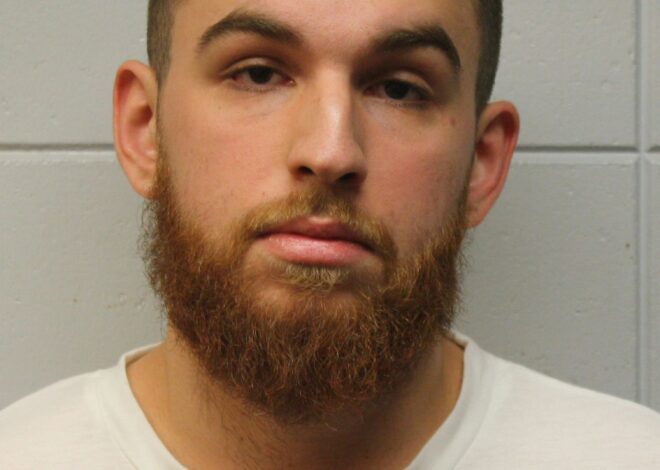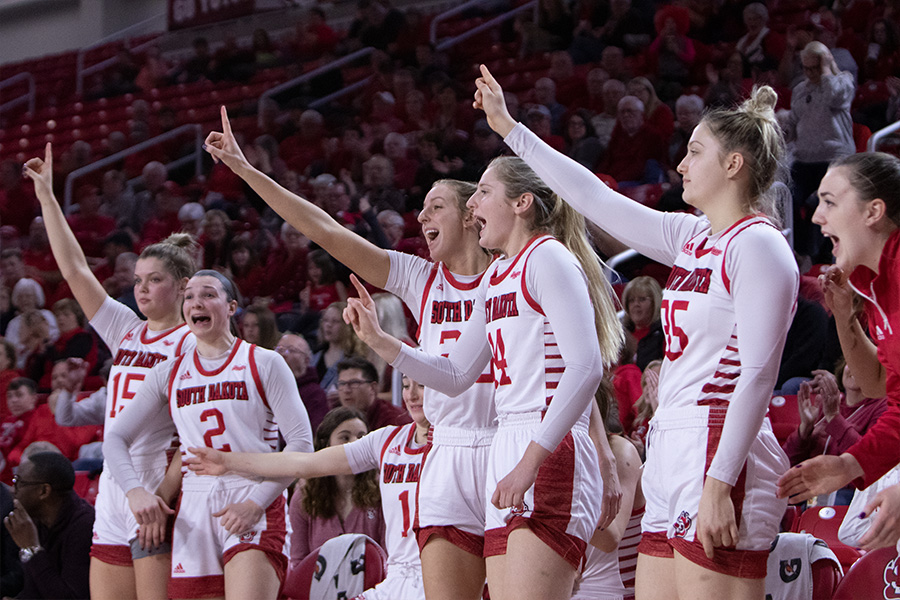USD Sanford Surgeon Leads Residency’s Return
SIOUX FALLS, S.D. (AP) — Melissa Johnson’s epiphany happened in a hospital room 15 to 20 years ago, back when they called the place Sioux Valley Hospital and not Sanford Health.
A cancer nurse by training, she was standing in the room of a very frail, very elderly woman.
Surgeon Dr. Gary Timmerman bent low nearby, pulling up the covers for his patient, tucking her into bed, lingering there until he knew she had everything she needed.
“It was like, ‘Wow,’ ” Johnson recalls now. “I’ll be honest, I had never thought of surgeon as a possible career for me because, I mean, establishing a good relationship with your patient and having a good bedside manner … those were important to me, and I didn’t think it was possible as a surgeon.”
Until that moment.
Ask her today, and Dr. Melissa Johnson will tell you it was a selling point in her decision to pursue a different career track – as a surgeon at the Veterans Affairs Medical Center in Sioux Falls. But just as important as that bedside manner now is the fact she also has signed on to help Timmerman run the newest residency program at the University of South Dakota Sanford School of Medicine, a five-year training exercise in general surgery meant to spread more such physicians across the rural landscape.
It’s the first new general surgery residency at a medical school in this country in the past decade, the Argus Leader ( ) reported. That it’s at USD says something about the clout and standing Timmerman wields among his medical brethren across the United States.
At 56, the Watertown native just finished a one-year reign as chairman of the American College of Surgeons’ Board of Governors – the first physician from this state to hold that prestigious and powerful position. It’s a role that took Timmerman to some of the most important legislative halls in Washington, D.C. It also made him a leading voice in a medical organization that counts 85,000 members globally and is the second largest organization of physicians in the world behind the American Medical Association.
He championed many initiatives with the Board of Governors – from standardizing recommendation letters for residency applicants to focusing on substance abuse within the profession. But Timmerman’s greatest glory for his home state might come from his leadership on the new surgery residency.
___
The USD medical school had such a program 30 years ago. It flourished from 1964 to 1984 under the leadership of Yankton’s Dr. Chet McVay.
But when the Graduate Medical Education Advisory Council looked across America in the mid-1980s and predicted that the 64,000 general surgeons practicing then would double by the year 2000, “they looked for what I call the low-hanging fruit to stop programs that were producing these surgeons,” Timmerman said.
USD’s program went away.
That big jump in surgeons never materialized. It had increased to 66,000 by 2000. Worse, what surgeons there were in rural America were dwindling, either because of retirement or the draw to specialized practices in urban settings.
In 1992, 45 percent of graduating general surgeons in America went on to fellowships training them as breast surgeons, vascular surgeons and other specialties. Today, 80 percent of surgeons specialize. Now, in a country that graduates 1,000 surgeons a year, only 200 go down the general surgical path, Timmerman said.
The problem with that, Johnson said, is that specialty surgeons are much less likely to enlist in the 24/7 rotation so necessary to trauma centers and rural hospitals.
“They don’t want to be taking calls overnight,” she said. “But without that, American hospitals can’t survive. If all your surgeons are getting subspecialties, then who’s left to provide that emergent care?”
The American College of Surgeons recognized the looming crisis. As it considered options to answer the shortfall, the idea of building more programs that specifically trained general surgeons floated to the surface. The question was, “where to create these programs?”
That’s when Timmerman’s hand went up.
___
In the mid-2000s, he saw 50,000 surgeries being performed annually at Sanford, Avera McKennan, the VA and the Avera Heart Hospital and lamented the fact that no one was learning from that work. “To me, it was volumes in a library, and nobody’s going in to read the books,” he said.
The federal government pays for residency training out of Medicare and Medicaid funding but doesn’t finance new programs unless existing ones go away. So Timmerman needed an investor, and Sanford Health stepped up with an initial pledge of $2 million to launch the five-year program.
With teaching and administrative assistance from surgeons including Johnson and Dr. Thavam Thambi-Pillai, the program took flight. It runs smoothly day-to-day now because of the heavy lifting of Amber Johnson, coordinator for the general surgery residency.
With three slots for each of the initial two classes, there are six medical school graduates in the mix now, with another three about to come on board. When the program finally gets to its fourth and fifth years, 15 future surgeons will be at some stage of training.
“I had no idea how many people would be interested in a brand-new program,” Timmerman said. “So guess how many people applied for the first six spots … where there was no proof we could even produce a surgeon? Close to 700, mostly from U.S. med schools, wanting and knowing that we’re going to train rural, community-based, broad-based general surgeons.”
The plan, of course, is that these future surgeons won’t just populate operating rooms in Sioux Falls and Rapid City, the only two communities in South Dakota the federal government doesn’t view as rural. While some candidates have expressed an interest in doing missionary work – that’s fine with Timmerman – the medical school has focused on students with Midwestern roots who are drawn to rural life.
Statistics show that up to 80 percent of medical students stay in the area where they do their residencies, said Dr. Mary Milroy, a general surgeon at the Yankton Medical Clinic and president of the South Dakota Medical Association.
“So I know with this program, when they’re selecting their residents, they’re picking people who say they want to practice in a rural setting,” Milroy said. “I’m extremely optimistic this is going to be a tremendous benefit to the state.”
Tremendous in a number of ways, Timmerman agreed. For one, when surgeons and hospitals in communities such as Winner, Spearfish, Huron or Brookings struggle with recruiting, there’s a good chance the residency program can help them.
With the blessing of the Accreditation Council for Graduate Medical Education and the American Board of Surgery, the medical school is allowed to send a third-year resident to one of those communities for “what is almost like a one-month job interview,” Timmerman said.
“So then that’s exactly where I want to go to those communities, go to those hospitals and say: ‘I’ve got three surgeons coming out. What would it take to put one in your community?’ ” he said. “Let those communities come up with a package, and let them make it look enticing. And most of these kids, most of them are Midwest people who are going to want to go back to rural medicine.”
___
The thing is – those communities will end up with more than a surgeon. They get a tremendous economic development boost as well, Timmerman said.
An Oklahoma State University study in 2010 found that a general surgeon practicing in rural America is likely to generate more than $1.3 million for a hospital. On top of that, an additional $1.4 million and 25.9 jobs are generated in the community in which the general surgeon practices.
So there is job, income and tax revenue creation there. And for people in rural South Dakota who have money, insurance and needs but don’t have access, “There is an answer,” Timmerman said.
Had he not been so heavily involved from a leadership standpoint in the American College of Surgeons, “I’m not sure this all would have happened,” Milroy said. “He had very good connections. He had passion. Somebody needed to really be the champion to make the surgical residency happen. It was Gary.”
What he hopes surgical residents get out of this program is more than just technology and techniques that come with operating room practice. There’s the humanity side as well, the one that Melissa Johnson saw in that elderly woman’s room so many years ago.
While renowned for his work in cancer surgeries – he was the first surgeon in the Upper Midwest to robotically perform a transhiatal esophagectomy – Timmerman said his students still need to understand and learn the difficult realities of limitations that exist.
Here’s the sad reality: He might be able to remove all of a patient’s cancer. The pathologist likely will confirm that. But low cure rates affiliated with, say, esophageal or pancreatic cancers “mean in five years it will come back in your lungs or your brain or your liver,” he said.
“So you can reassure your patients,” he continued. “But they live their remaining lives with the ghost in the back of their head that the cancer could come back, even though Timmerman said it’s gone. That’s sad. These med students need to understand that.”
He brings them into the room with him when he shares bad news, like a fly on the wall.
“I’m not afraid to cry in front of my patients,” he said. “I’m not afraid to hold a hand … to give a hug. They’ve got to see that we’re not these Teflon people that everything bounces off of.”
And when the sadness becomes too much, the stress of the job too burdensome, Timmerman likes to get in his car and head west toward Marion and the family farm passed down by his grandparents.
There, he might escape to simply mow the grass. Or to sit on a tractor and turn the soil in little four-acre plots that he plants with corn or soybeans or sorghum. They’re meant to attract deer and pheasants, but there’s little hunting that goes on here.
Instead, he’ll climb into a deer stand at sunrise and watch nature come alive. A seven-point buck can stroll by beneath him, and he probably won’t even notice.
“When I’m sitting in the silence or on the tractor, God puts epiphanies in my head that say, ‘You were worried about this; why didn’t you do that?’ ” he explained. “It lets me deal quietly, by myself without distraction, with issues that are really pertinent to patient care.”
Like how he’s going to get more surgeons into rural America. Or what else he could have done for a very frail, very elderly patient.
In the quiet or in the clatter, the answers always seem to come.
To Timmerman’s benefit. And to South Dakota’s as well.
___
Information from: Argus Leader,


